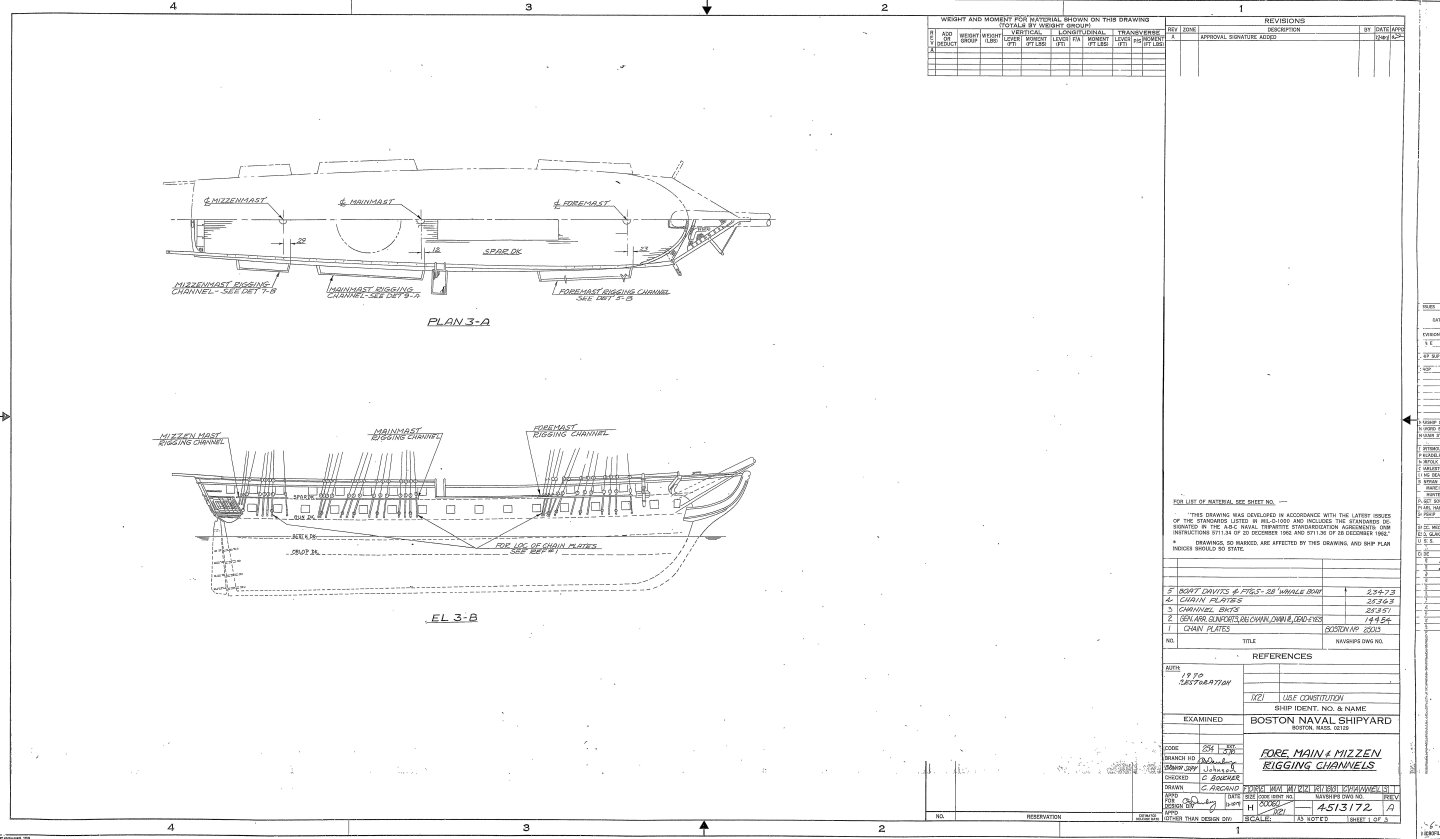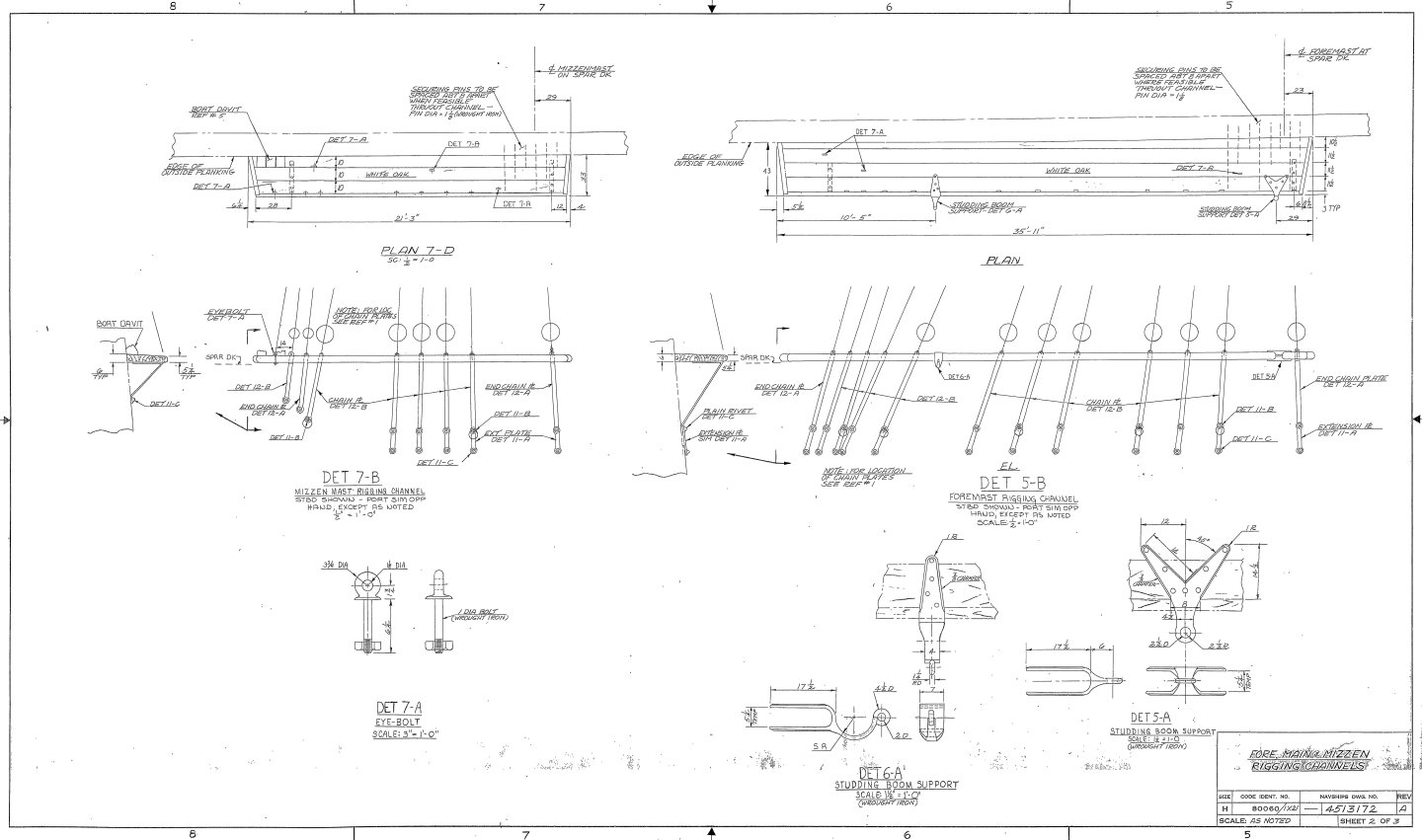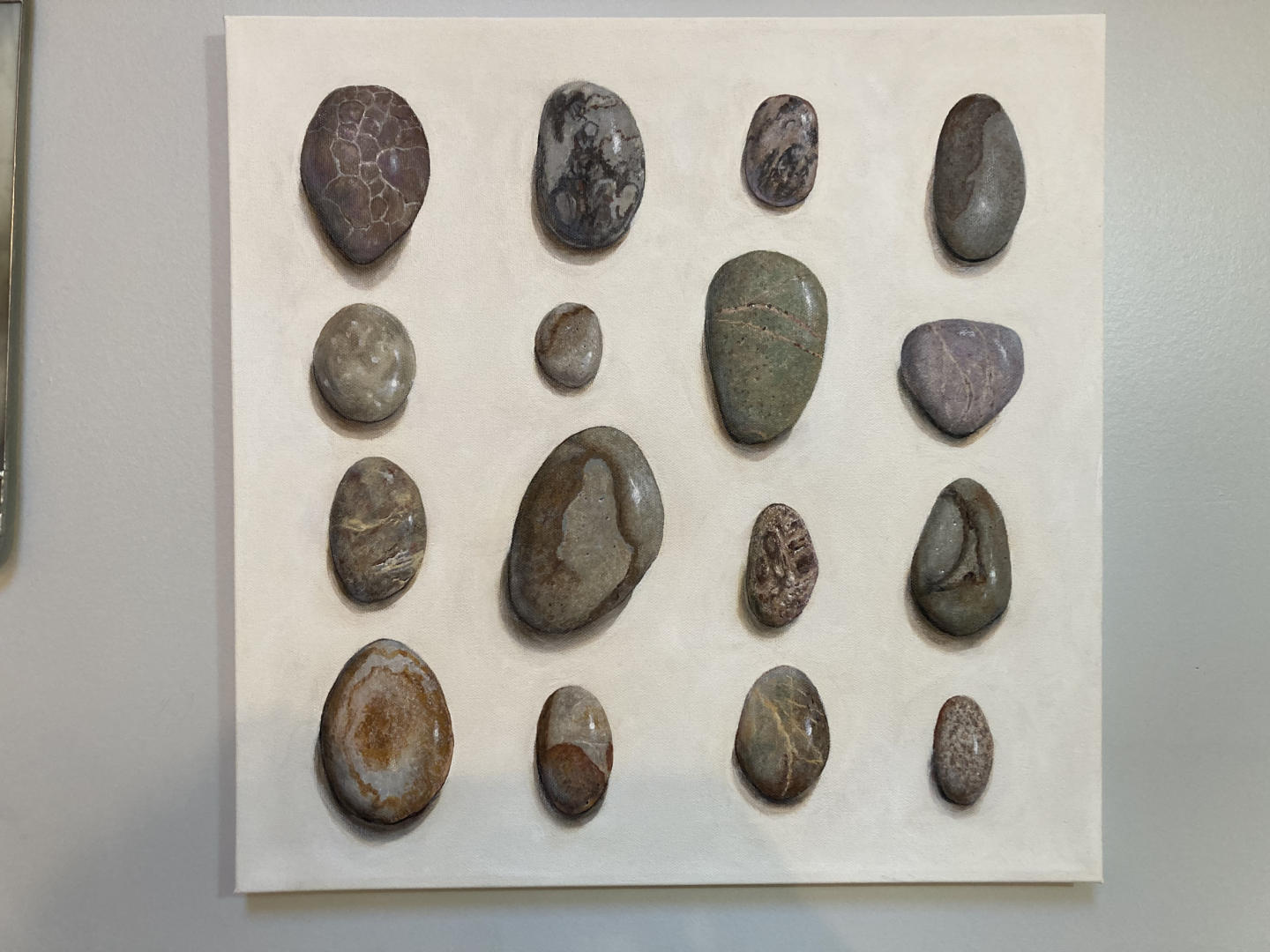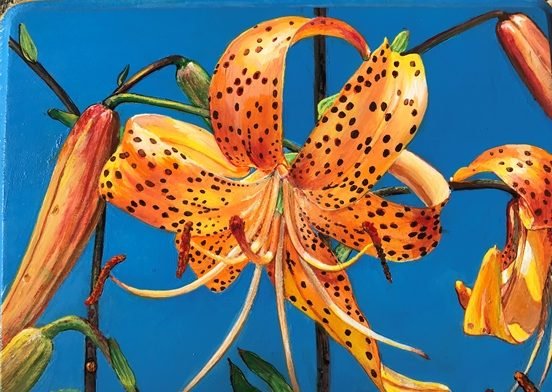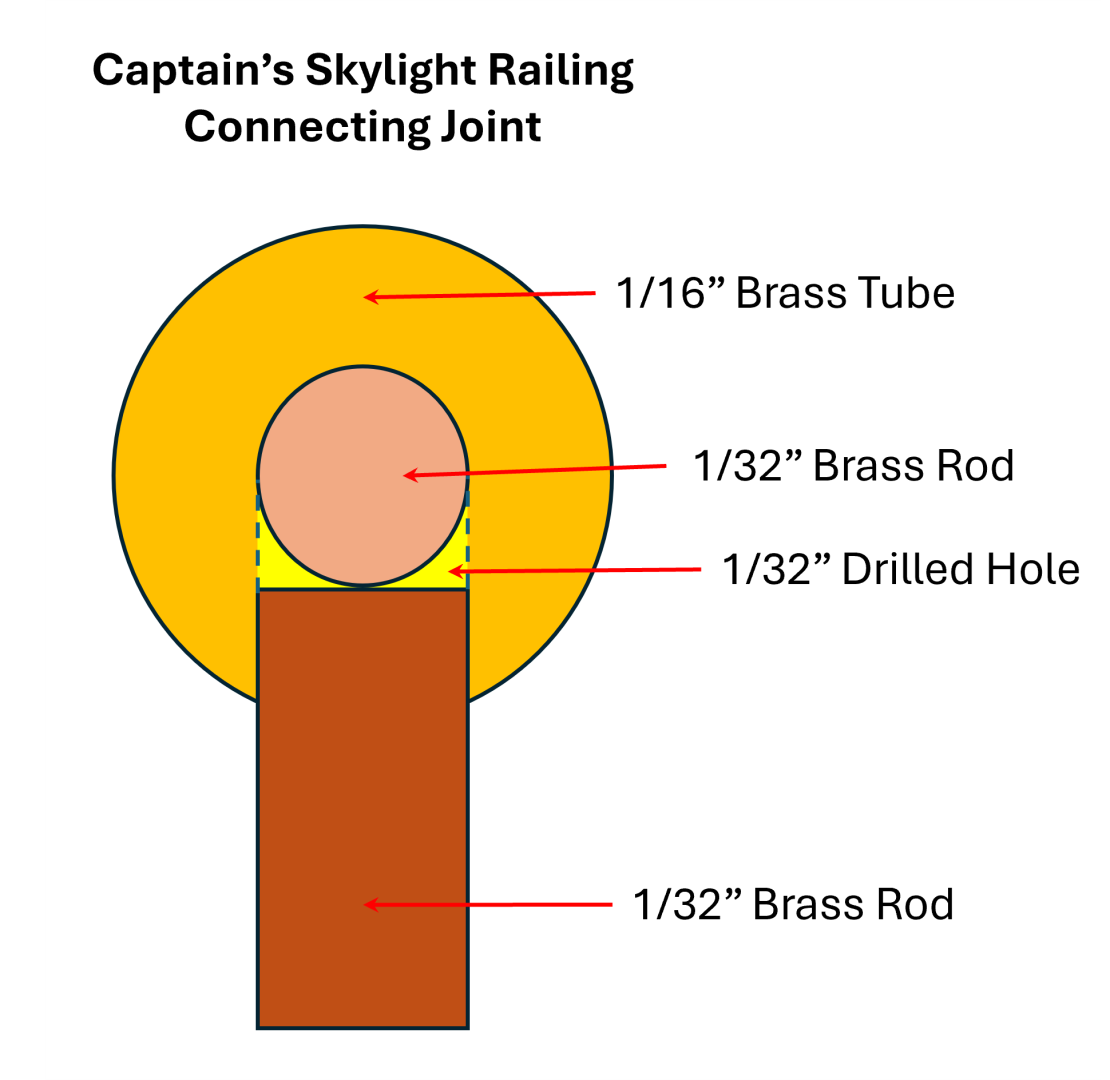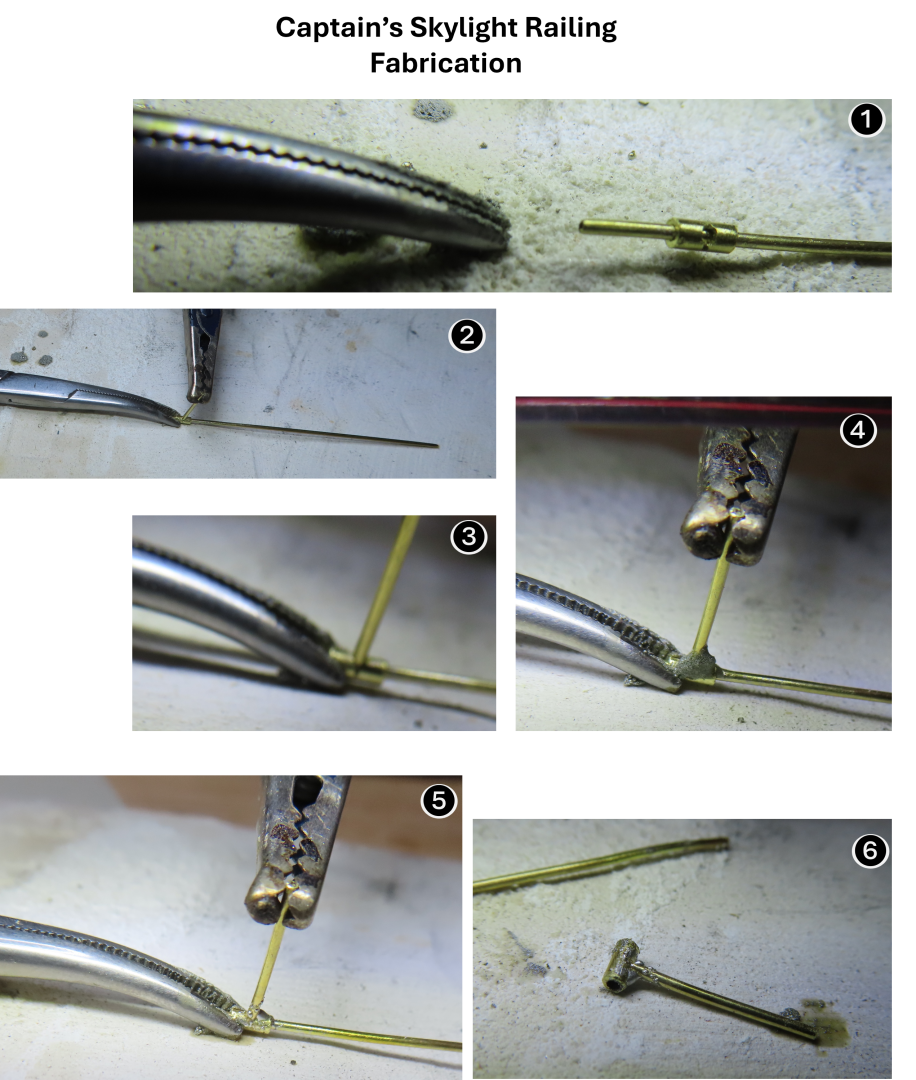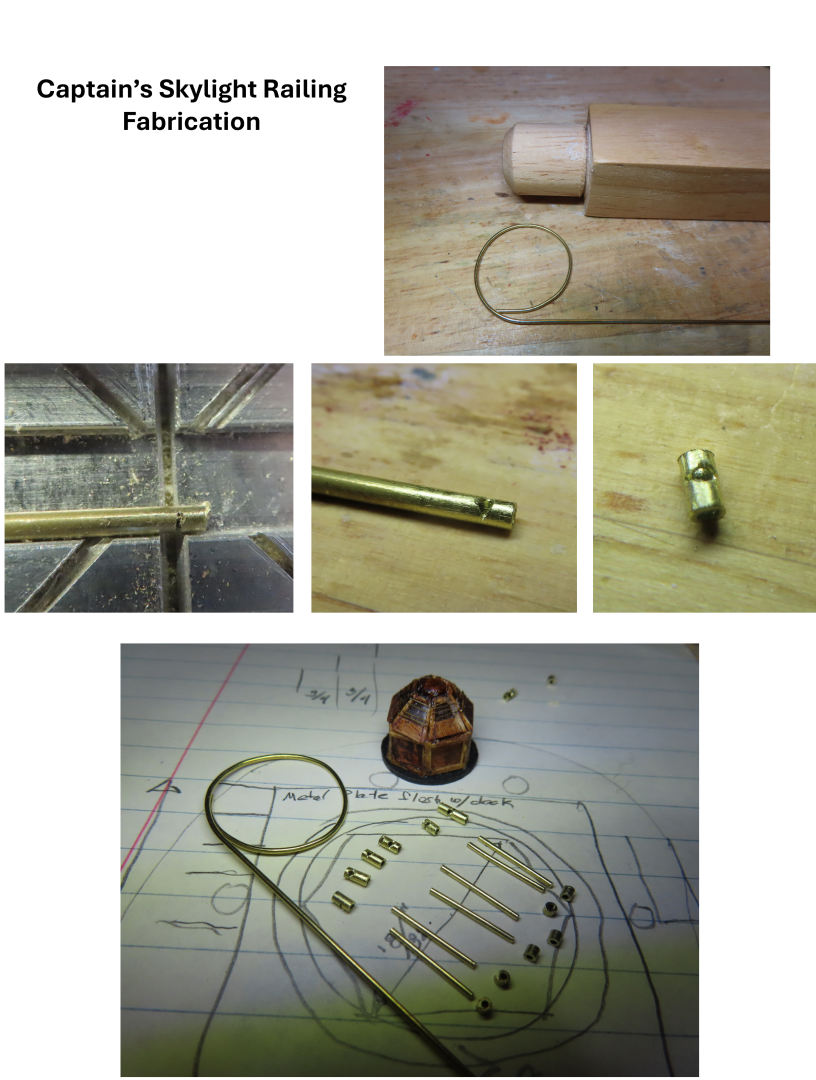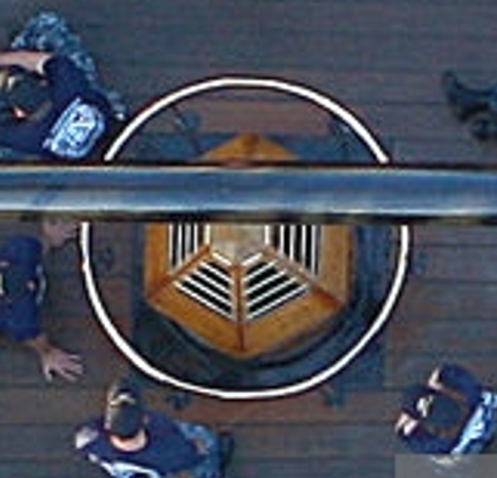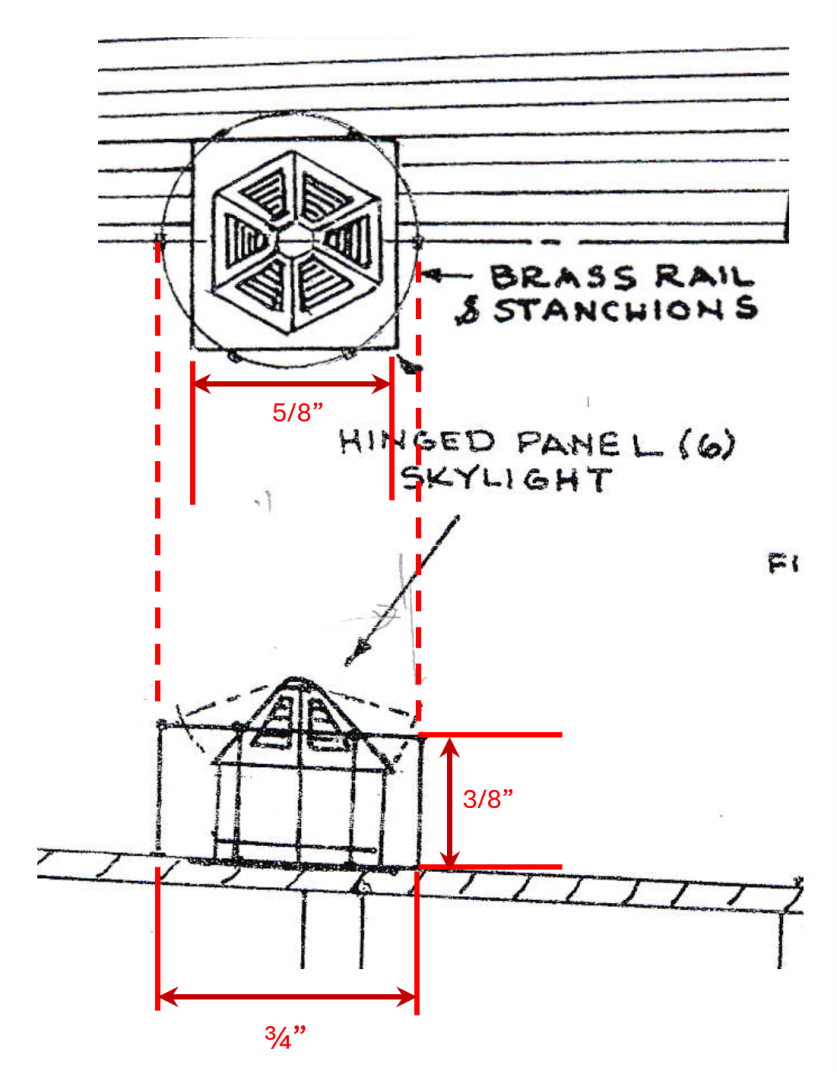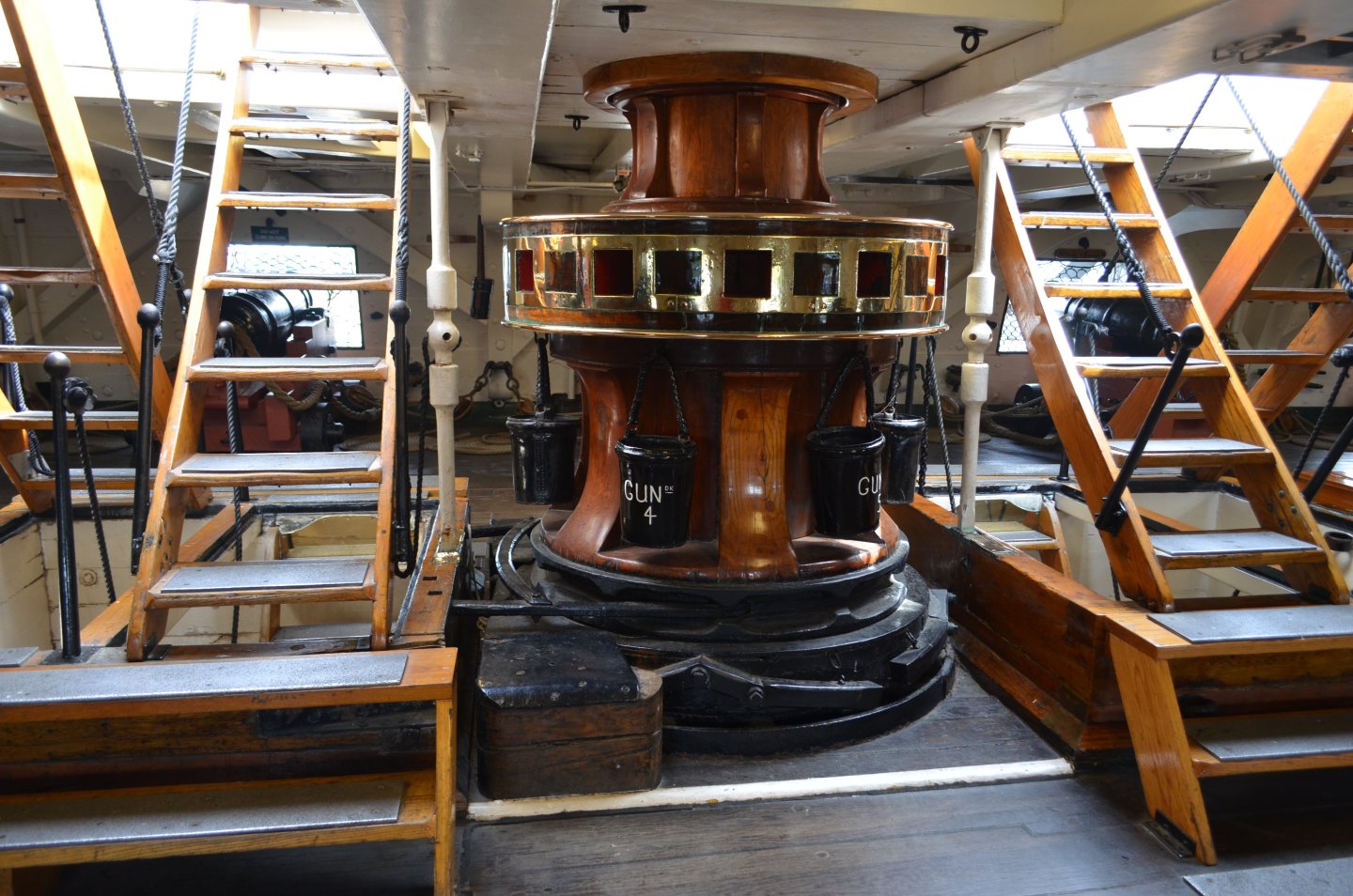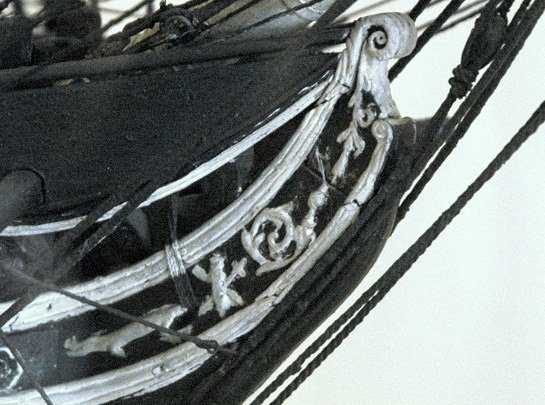-
Posts
2,606 -
Joined
-
Last visited
Content Type
Profiles
Forums
Gallery
Events
Everything posted by JSGerson
-
If you have to magnify the images this much to see the difference, the average person from a foot away, won't. The choice to fabricate new lids for to accommodate the smaller diameter guns is yours as captain. Yes, I believe it may help create the illusion that all of the guns are the same diameter, but is it worth the effort, that is is your decision. I guess that depends on how finicky you are. Overall, your model looks great! Jon
-
I have a Byrnes saw (an absolute must), a Byrnes thickness sander (hardly used), a disk sander, a 20 year old Dremel drill press stand (horizontal and vertical positions only - no 45 degree), a 50 year old Dremel scroll saw (noisy as hell and lots of vibrations), a corded Dremel-like tool, a cordless variable speed Dremel tool, and a small wood lathe (hardly used). But, I don't have a drum sander, router, or belt sander. So I've use the Dremel drill press, as a disk sander, a router, and as a drill press. I make do with what I have. At 78 years old, I'm not investing in more stuff, so I have to make do with what I have. If I had a belt sander (which I have no experience with) wouldn't it be prone to sanding a flat edge? The use of the "drum sander" allowed me to maintained the camber. Whether I could have done that with a belt sander as easily, I don't know. Jon
-
Just a tip: DO NOT throw anything away. For instance, When I removed the horizontal braces (beams) from the bulkheads, because I was anticipating the fabrication of the gun deck and more realistic positioning of the beams based on the US Navy plans, I marked which bulkhead they came from and kept them. They were subsequently used when I put in the new spar deck beams because they had the proper deck camber, which I also traced onto the additional newly fabricated beams. Sometimes you need to reproduce the shape of something, you might be able to use the precut shell to reproduce a replacement part or a matching curve/shape of something. Jon
-

USS Constitution by mtbediz - 1:76
JSGerson replied to mtbediz's topic in - Build logs for subjects built 1751 - 1800
OK, so I rushed my initial response to you Mustafa because I was pressed for time. You are correct, there are no clear diagrams/instructions on how to fabricated the channels on the MS plans. That is a major shortcoming of the kit. So, I resorted to providing you an excerpt from Robert Hunt's practicum, pictures from the Mamoli plans, and actual US Navy plans. Per the practicum: Practicum photos below Mamoli (scale 1:93) scans below Mamoli 01.pdf Mamoli 02.pdf Mamoli 03.pdf -

USS Constitution by mtbediz - 1:76
JSGerson replied to mtbediz's topic in - Build logs for subjects built 1751 - 1800
Per the note on sheet 4 above the gun per 3rd from front, it states "for channels & chain plate see details SE: sheets 7 & 8. At the bottom of those referenced sheets you will see the details. Jon -
It seems the quest for detail is a curse or talent that is in my family. My mother's family had artists and woodworkers and she passed the painting talent on to my sister. I didn't get any artistic skills other than studying and getting a degree in Civil Engineering though I never practiced that skill. But it seems I like visual detail. Below are a few of the items my sister created. These are NOT photographs, but paintings.
-
To assemble the parts, I had two choices, glue them or silver solder them. The best way to assemble them with strength was to solder. If I was inept enough in this endeavor, hopefully I could fall back and use either CA glue or epoxy. Ideally in soldering, you want the joints to be mechanically strong on their own, and the solder just holds the pieces rigid. In this case that wasn’t possible. The solder had to do all the work. Just inserting the rod into the cut hole in the tube wouldn’t work. If the rod was inserted completely, it would prevent the joint from being threaded onto the railing. During the solder process a length of 1/32” rod was inserted into the tube to act as a “stop” for the 1/32” stanchion rod. Hopefully, it wouldn’t be soldered in place as it needed to be removed after the soldering process. As it turned out, of the first five attempts, two got soldered in place and had to be discarded. I found that if I used 1/32” brass rod as the “stop,” it was a 50-50 chance it would get stuck. However, when I switched to music wire for the “stop,” I had no problems. In the photos below: 1 – 1/32” brass rod inserted into tube to act as a “stop” (later music wire) 2 & 3 – Brass stanchion rod held in place for soldering 4 – Silver Solder paste applied to joint 5 – Soldered joint formed after heat with mini torch 6 – 1/32” brass rod “stop” removed. Competed soldered joint before cleaning the component up The last photo shows the joints strung onto the circular railing. The deck fasteners, rail closure, and final positioning of the stanchions will have to wait until the deck planking is installed.
-
I wanted to create stanchion/connecting joints from brass rods and tubes. This meant confronting my old nemesis, drilling holes in brass. And this was especially difficult as I wanted to do this on a curved surface of a tube. The hard part was biting into the brass with the drill bit, so I skipped that part! Instead, I cut halfway through into the tube with my miter handsaw, just exposing the interior of the tube. Then with a fine drill, that cut was opened into a small round hole, and with a 1/32” drill bit, it was widened to accept the 1/32” rod. The ends were trimmed a bit to shorten and center the drilled hole into the tube (not shown in the picture below). Finally, 1/16” length pieces of the tube were cut off creating the deck fasteners.
-
To be consistent with the companion ways, the rail and stanchions were made of 0.032” brass rod with the connecting joints and deck fasteners made from 1/16” brass tube. The brass rod was wrapped around my work bench peg insert which just happened to be ¾” diameter bending it to the initial shape of the circular railing.
-
Captain Skylight Railing I could not find any US Navy plans for the hand railing surrounding the Captain’s Skylight, so I referred back to the MS kit plans. There, I measured the dimensions as follows: the railing is ¾” in diameter and 3/8” high off the deck (scale). The skylight sits on what the plans identifies as a square metal plate, imbedded flush with the deck. The composition of the plate material is hidden and therefore will not be fabricated but the area will be just painted black to get the flush effect. From the photos, it appears that the plate is coated with some sort of tar material, so I assume this was a form of a waterproofing seal for the skylight. BTW, the US Navy plans for the skylight do not show the plate.
-
Strand, are you planning to build a cross section model of the Constitution? I have a plethora of images (over 4,000) and US Navy plans of the ship. That's about 5Gb worth of stuff, so you are going to have to be just a little bit more specific of your needs. I will gladly provide you anything I have, but it's best if you request them when you need them. Jon
-
Officially, the gun deck is now complete...I think. I am now planning to install the Captain's skylight I previously made onto the spar deck. This will involve planking part of the spar aft section, creating the black square area on the planks in the area where the skylight will sit on, and fabricating and installing the circular brass railing. No idea how long or short time this will take. Jon
-
I ran into a problem with the ladders for the capstan hatchway. I made them snug to the hatchway walls such that I could not slide the ladder down the hatchway because the stanchions made the ladders too wide. Therefore, I modified the stanchion attachment method. I filed a grove in the ladders’ sides for the stanchions to recess into. In theory this should have been simple, but the execution was not. Just the slightest nudge, on the stanchion and it would pop off the ladder. It took numerous attempts, gnashing teeth, time, and vocabulary that would have gotten me divorced if I had ever been married. But eventually, it got done. The upper ends of the hand ropes were tied off on the brass framework.
-
Companionway Ladder Hand Ropes As I mentioned in my last post, I am adding the hand ropes to the companionway ladders going from the spar deck to the gun deck, which were made last year. At the base of the ladders, the stanchions anchor the hand ropes. Trying to maintain close to scale as possible (within reason) with the US Navy plans, I used 0.013” (0.33 mm) music wire cut to 3/8” lengths for the scale stanchions. Additionally, I deduced from the plans that the rope was about 1” diameter or 0.016” scale. Therefore, I used Syren Ship Model Company 0.012” (.30mm) black rope which I had on hand, for the hand rope.
-
Gregg, your US Navy plan shows the plan view of some of the rails. What I was looking for was elevation and detail views. According to the BlueJacket's instruction booklet (yes, I've got a copy of that, no less a signed copy by the author Laurence Arnot himself!) Page 46 which states, "When CONSTITUTION's bowheads were restored as described, there were no plans and each component had to be templated in place on the ship." I would assume those templates would have been recorded somewhere, but they have not been made public to the best of my knowledge. Jon
-
I struggled with the headrails like everyone else. And it's disappointing and shocking, just shocking that I do not have any US Navy plans showing their dimensions and believe me, I looked for them. I resorted to using the method shown in Hunt's practicum to fabricate them. Sorry to disappoint all of you. Jon
-
Short answer: I haven't a clue. To be honest, I don't care how long the blog or a book is, if the the reading/information is enjoyable, it's not too long. I agree with Mustafa. From the Marquardt book picture you posted, that looks to me like a 90 degree twist. I believe I twisted mine although there may be some I didn't. I try with in reason to be as faithful to the actual item as I can make it. I don't remember breaking any hooks getting it to twist. Brass is quite malleable. Of course if you work it too much, it will break from metal fatigue. I did however, break a few from poor drilling or lost a few in my hungry rug. Jon
-
Right now I'm adding the ladders and their rope railings that go through the hatchways that are covered by the brass frameworks. It turned out to be a little tricker than I thought it would be due to the tight tolerances between the openings and the ladders. Once those are completed, I've got the ship's wheels and binnacles to fabricate and install as well as the brass railing around the skylight. I'm going to try to leave off as much planking as I can so that the gun deck can be visible (more or less). My personal philosophy is to have viewers see more the longer they look. For instance, there is a lot of stuff I fabricated for the gun deck that is not clearly visible at first glance. If the viewers move around and spend a little time studying the model, hopefully they will discover new items they weren't initial aware of. I don't want them to become bored. Although I am building my model in the style of the 2017 restoration, the carronades will all be 1812 style. Presently, the actual ship has only two (I believe) 1812 style guns. It has been discussed before that the carronades with the wedge (used for adjusting elevation) are incorrect for the 1812 period. These replica non-working guns were installed during the 1927 restoration. I decided to correct that error and to replace all of them with the 1812 versions (screw type adjusting elevation). I will discuss that process in more detail when I get to them. Jon
About us
Modelshipworld - Advancing Ship Modeling through Research
SSL Secured
Your security is important for us so this Website is SSL-Secured
NRG Mailing Address
Nautical Research Guild
237 South Lincoln Street
Westmont IL, 60559-1917
Model Ship World ® and the MSW logo are Registered Trademarks, and belong to the Nautical Research Guild (United States Patent and Trademark Office: No. 6,929,264 & No. 6,929,274, registered Dec. 20, 2022)
Helpful Links
About the NRG
If you enjoy building ship models that are historically accurate as well as beautiful, then The Nautical Research Guild (NRG) is just right for you.
The Guild is a non-profit educational organization whose mission is to “Advance Ship Modeling Through Research”. We provide support to our members in their efforts to raise the quality of their model ships.
The Nautical Research Guild has published our world-renowned quarterly magazine, The Nautical Research Journal, since 1955. The pages of the Journal are full of articles by accomplished ship modelers who show you how they create those exquisite details on their models, and by maritime historians who show you the correct details to build. The Journal is available in both print and digital editions. Go to the NRG web site (www.thenrg.org) to download a complimentary digital copy of the Journal. The NRG also publishes plan sets, books and compilations of back issues of the Journal and the former Ships in Scale and Model Ship Builder magazines.



